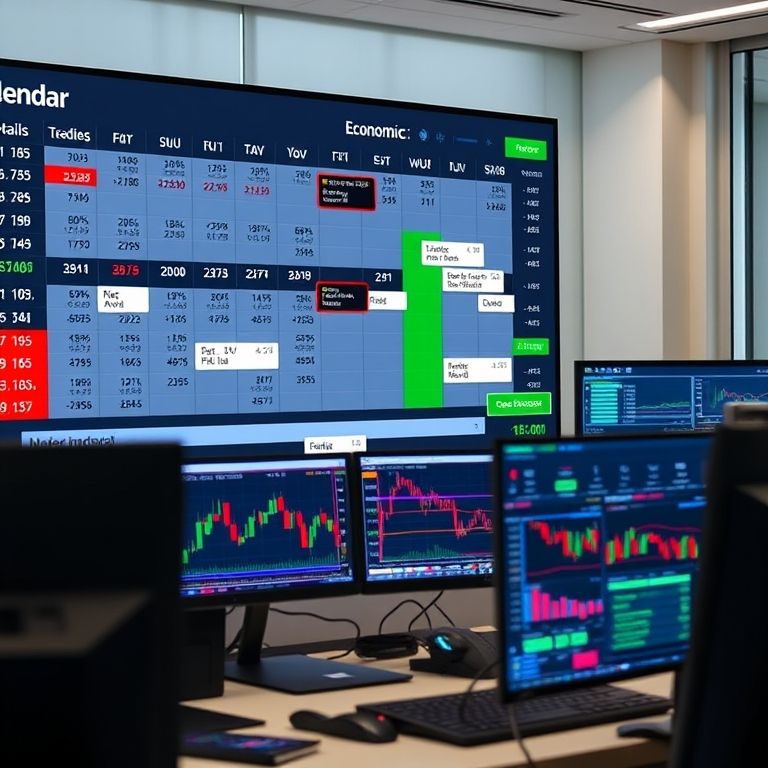How to use an economic calendar for forex trading?
How to use an economic calendar for forex trading?
Introduction
Walk into a trader’s desk any morning and you’ll hear the hum of charts, news alerts, and that little calendar ticking away in the corner. An economic calendar isn’t magic, but it’s a reliable compass for navigating forex volatility. It highlights which releases could spark sharp moves, how forecasts compare to actual numbers, and where liquidity might thin out. When you pair it with solid risk management, this tool turns news events from random noise into structured opportunities.

What the calendar does for you
- Function: It tracks macro releases, scheduled times, and market consensus. The calendar helps you forecast potential spikes in price action rather than chasing moves after they happen.
- Key indicator awareness: You learn which data points tend to move which currencies (for example, U.S. payrolls often shake USD majors, while inflation prints can tilt European pairs). You get a sense of crowd psychology—whether the market has already priced in the forecast or if a surprise could reverse the trend.
- Decision framework: With timing mapped, you can plan entry, stop, and exit in advance. The calendar becomes your pre-trade checklist, not an afterthought.
Setting up your calendar for forex
- Personalization: Filter for high-impact releases, set your time zone, and pick the currencies you trade most. Configure alerts so you’re notified a few minutes before a release and as the actuals come out.
- Contextual filters: Note the market’s current bias—risk-on or risk-off—so you don’t overreact to every headline. Some traders also track related metrics across assets to gauge cross-market influence.
High-impact indicators to watch
- Non-Farm Payrolls, CPI, GDP, PMI, and central bank communications are the heavyweights. They tend to produce bigger gaps, slippage, and quicker reversals.
- Forecast vs actual: The real edge comes from comparing consensus estimates with actuals and parsing the surprise magnitude. A small surprise can trigger a big move if liquidity is thin at that moment.
A practical workflow
- Before release: scan the calendar for the upcoming high-impact event, check the consensus, and set a plan (entry size, risk level, and a plan B).
- During the release: observe the initial price spike, don’t chase the first micro-move, and watch for a consolidation or a retrace that confirms a setup.
- After the release: reassess risk, adjust stops, and consider whether correlation signals (stock indices, gold, or commodity pairings) support your thesis.
Beyond forex: the multi-asset edge and DeFi cautions
- Across assets: A single calendar event can ripple into stocks, crypto, and commodities. Seeing how different markets react helps you avoid overexposed exposures and spot hedging opportunities.
- DeFi outlook and challenges: Decentralized finance introduces new sources of data and timing risks (oracles, liquidity fragmentation). The calendar still helps, but you’ll want to vet data integrity and be mindful of model risks.
Future trends: smart contracts, AI, and prop trading
- Smart contracts and AI are reshaping execution and analysis. Automated strategies can react to calendar signals faster while persisting risk controls.
- Prop trading growth: Access to capital accelerates experimentation with calendar-driven strategies, provided you maintain rigorous risk discipline and transparent edge testing.
Slogan: Sync your moment with the market’s heartbeat—calendar-informed trading that keeps you in control.
Conclusion
A well-tuned economic calendar turns volatility into strategy. It’s not about predicting the future with certainty, but about lining up information, risk, and timing so you can trade with intention. In a world where markets increasingly interlink, staying calendar-aware is one of the most practical advantages you can develop.
Support Pollinations.AI: